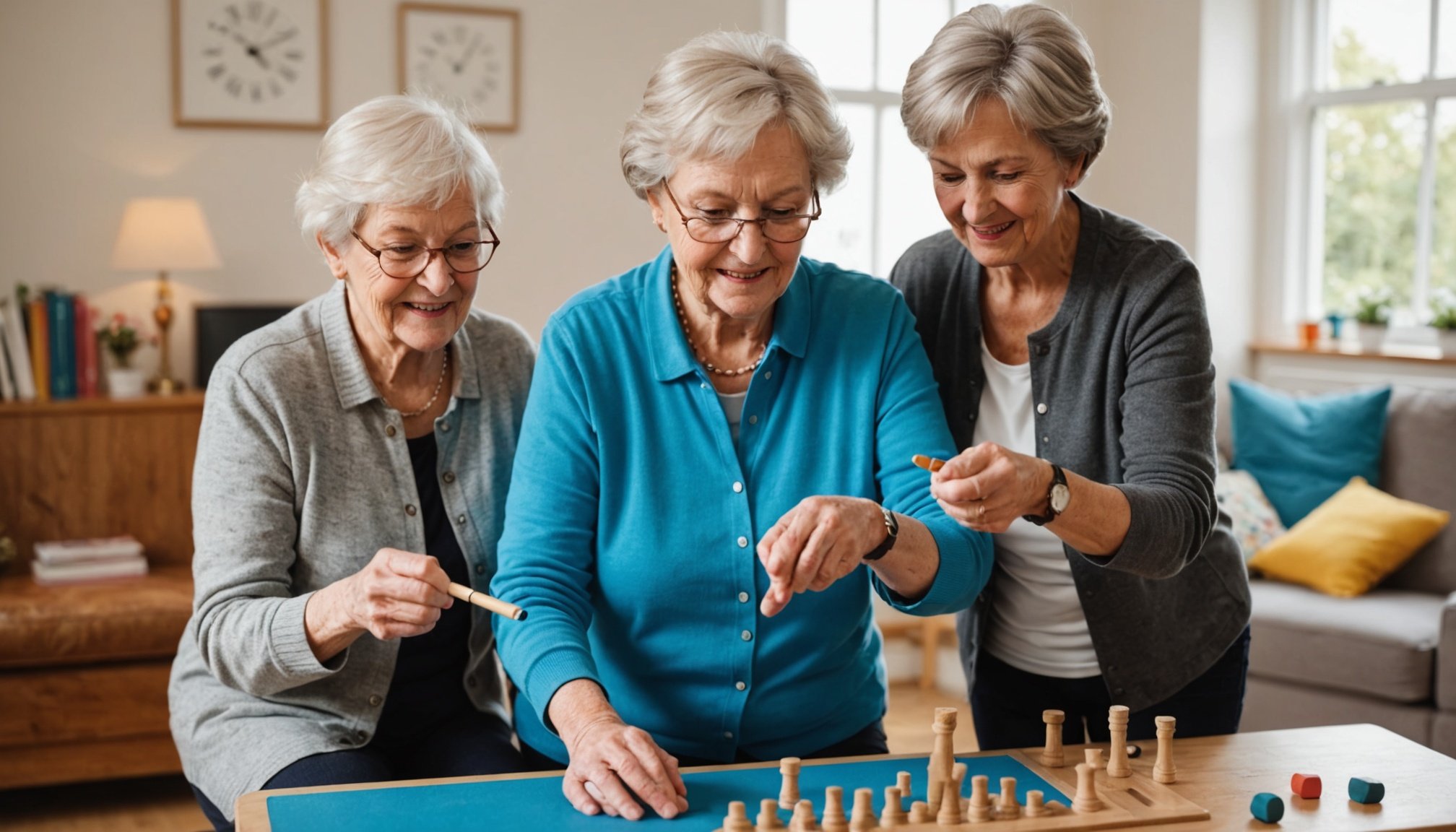Overview of Fine Motor Skills in Seniors
Fine motor skills are essential for seniors, especially those over 80, as they play a vital role in daily activities such as buttoning clothes, writing, and using utensils. These skills involve small muscle movements, usually in coordination with the eyes, and are crucial for maintaining independence.
As seniors age, they often encounter challenges in maintaining these skills. Common issues include decreased hand strength, joint pain, and reduced coordination, which can make routine tasks more difficult. These challenges can affect quality of life and lead to frustration.
Also read : Discover the Advantages of Joining a Senior Citizens Club for Enhanced Social Connections
To combat these challenges, targeted exercises can be beneficial. Engaging in activities that focus on improving motor skill development can lead to significant improvements. Exercises such as squeezing stress balls, performing hand stretches, or using specially designed puzzles can help enhance dexterity and strength.
For seniors over 80, it’s important to incorporate these exercises regularly to maintain and even improve fine motor functions. Not only do these activities aid in physical improvement, but they also boost confidence, enabling seniors to manage daily tasks more effectively. Encouraging participation in these exercises is a proactive way to support them in retaining their independence and enhancing their overall well-being.
Also to read : Exploring the Advantages of Mindful Eating for Senior Diabetics: A Path to Better Health
Targeted Exercise Routines
Setting up a routine with targeted exercises can be incredibly beneficial, especially for seniors aiming to enhance mobility and dexterity. By tailoring specific exercise routines, you can address particular needs effectively.
Simple Hand Exercises
Simple hand exercises offer numerous benefits, including improved dexterity and circulation. Practising these routines regularly can significantly enhance hand function. Here’s how you can start:
-
Gentle Fist: Begin by making a gentle fist, then slowly undo the fist and open your fingers wide. Repeat 10 times with each hand.
-
Finger Bends: Slowly bend each finger individually towards the palm, then stretch them straight again. Perform this exercise 5 times per finger.
Aim to practice these exercises at least three times a week for optimal benefits.
Finger Stretch and Strengthening Techniques
Finger strengthening exercises are crucial for maintaining hand functionality. Techniques such as the Rubber Band Stretch or Finger Web Flex can boost finger stamina and flexibility.
- Rubber Band Stretch: Place a rubber band around your fingers and thumb, then spread them apart for resistance training.
Ensure you maintain proper form while performing these exercises to avoid strain. Focus on slow, deliberate movements to maximise efficiency.
Wrist and Grip Enhancements
To improve grip strength, incorporating wrist exercises into your routine is essential. Use tools like hand grippers or stress balls to enhance wrist strength.
- Wrist Curls: Using light weights or a resistance band, perform curls to strengthen your wrists.
- Grip Squeezes: Simply squeeze a stress ball to build grip strength.
Always prioritize maintaining good posture and technique to prevent injury while exercising. Regular practice, paired with patience, will yield the best results for seniors’ exercises.
Safety Tips and Precautions
When seniors are considering incorporating exercise into their routine, understanding key safety tips is crucial. Safety should always be a priority to prevent injuries and ensure a beneficial experience.
Senior exercise safety begins with consulting healthcare professionals. This step is imperative as they can offer tailored advice taking into account any existing health conditions. They will help devise a plan that aligns with one’s physical capabilities, ensuring safety while maximising health benefits.
Another important consideration is establishing a safe exercise environment. Creating space at home to accommodate movements without risk of tripping or falling is essential. Ensuring that the area is free from clutter and equipped with appropriate gear, such as non-slip mats and supportive shoes, enhances safety.
Additionally, it’s important to incorporate precautions for seniors when starting an exercise regimen. Approaching activities gradually and paying attention to one’s body signals prevents overexertion. For instance, warming up before engaging in more intense exercises can significantly reduce the risk of injury.
Staying hydrated is also crucial. Dehydration can lead to dizziness or fainting, particularly in older adults. Regular sips of water throughout the session can help maintain hydration levels. By following these strategies, seniors can enjoy a safer and more effective exercise routine.
Benefits of Enhanced Fine Motor Skills
Enhanced fine motor skills provide significant benefits that can dramatically impact seniors’ health and their overall quality of life. Improving these skills promotes daily independence by making it easier for seniors to perform tasks such as buttoning clothes, writing, or cooking. This can substantially enhance their self-sufficiency and reduce dependency on others, which is vital for maintaining dignity and personal autonomy.
Moreover, there is a positive link between the benefits of motor skills enhancement and overall mental health. Engaging in activities that improve these skills can stimulate brain function, potentially reducing the risk of cognitive decline. Reports suggest that seniors engaged in targeted exercises experience improved mood, greater self-esteem, and a more active lifestyle.
Consider the testimonial from Mrs. Brown, a senior who found joy in painting again after improving her fine motor skills through dedicated hand exercises. Her story highlights how targeted activities can lead to tangible improvements in daily function and quality of life. These real-life examples serve as a testament to the critical role fine motor skills development plays in maintaining health and enhancing the well-being of seniors.
By focusing on fine motor skill enhancement, seniors can enjoy a richer and more fulfilling life, staying engaged with their interests and hobbies.
Additional Resources and Support
Navigating the journey towards improved wellbeing can be an enriching experience with the right resources at your disposal.
Online Exercise Videos and Tutorials
Online platforms provide a wealth of exercise resources to aid seniors in achieving fitness goals. Sites like YouTube or specialised platforms such as SilverSneakers offer an array of online classes, featuring exercises suited for different fitness levels. These videos often come from reputable instructors, ensuring you receive quality guidance. Guided exercises, available through these platforms, can significantly enhance motivation and bring a sense of accomplishment. Furthermore, live or virtual classes create opportunities for real-time interaction, allowing for immediate feedback and a more personalised experience.
Community and Support Groups
Participating in local community resources offers both additional support and a chance for social engagement. Many communities host group exercises that double as social gatherings, benefitting both physical and mental health. By joining these groups, seniors can share experiences and build networks, fostering a sense of belonging. Establishing such networks can be facilitated through local gyms, recreational centres, or nursing homes, providing crucial additional support on the path to fitness.
Follow-Up and Progress Tracking
Regular tracking of exercise progress can greatly enhance satisfaction and improvement. Seniors are encouraged to use journals or apps to track workouts, marking adjustments over time. This can help identify areas of improvement while facilitating the adaptation of exercises to skill level changes. Periodic assessment is vital, ensuring that exercises remain effective and beneficial according to individual progress.











